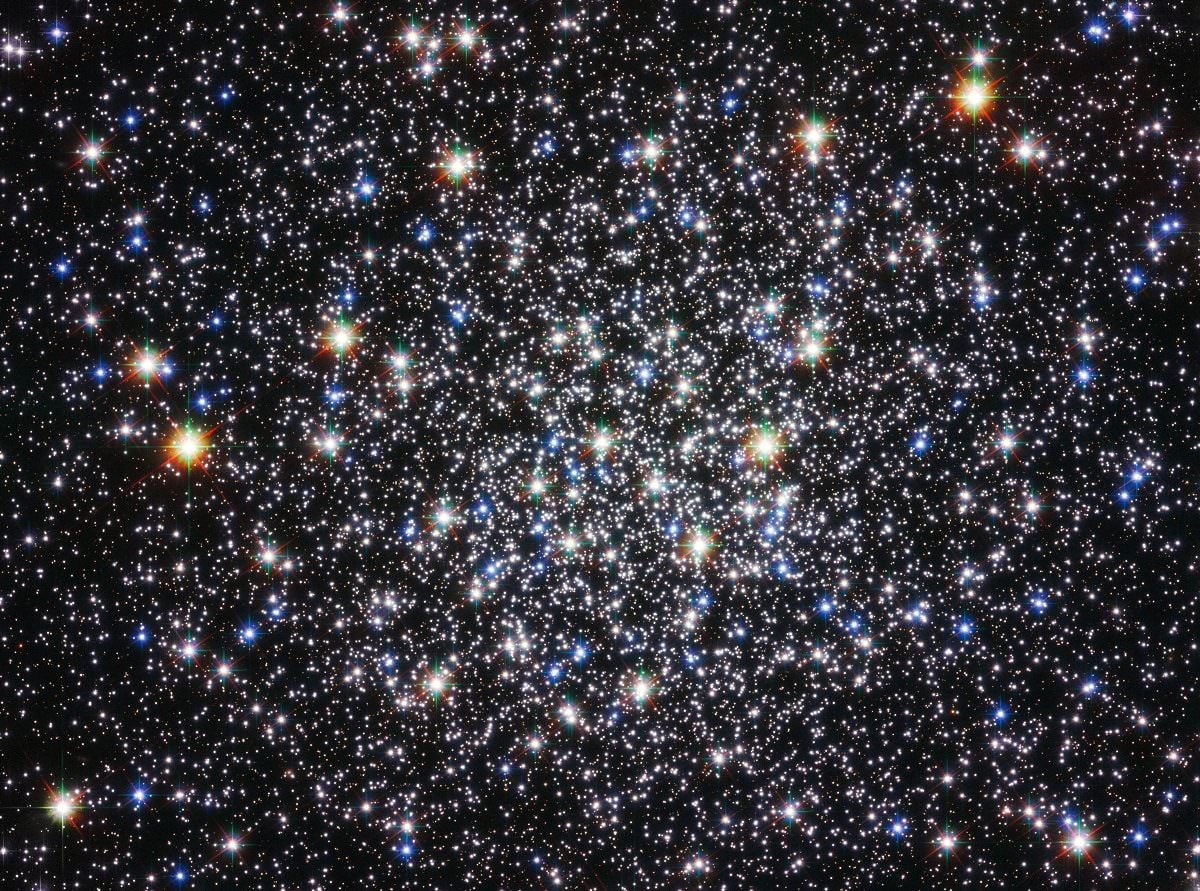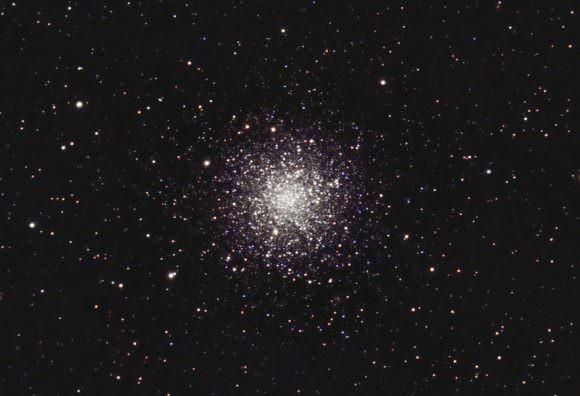Welcome back to another edition of Messier Monday! Today, we continue in our tribute to Tammy Plotner with a look at the M12 globular cluster!
In the 18th century, French astronomer Charles Messier noted the presence of several "nebulous objects" in the night sky which he originally mistook for comets. After realizing his mistake, he began compiling a list of these objects in order to ensure that other astronomers did not make the same error. In time, this list would include 100 objects, and would come to be known as the
Messier Catalog
to posterity.
One the many objects included in this is Messier 12 (aka. M12 or NGC 6218), a globular cluster located in the
Ophiuchus constellation
some 15,700 light-years from Earth. M12 is positioned just 3° from the cluster M10, and the two are among the brightest of the seven Messier globulars located in Ophiuchus. It is also interesting to note that M12 is approaching our Solar System at a velocity of 16 km/s.
Description:
Influencing about 75 light years of space in a spherical area, this loose globular cluster was once believed to be a tightly concentrated open cluster. With most of its low-mass stars carried away by the gravitational influence of the Milky Way, M12 contains only 13 variable stars. As Dr. Guido De Marchi of the European Space Agency noted in a
study about M12
,
[caption id="attachment_128145" align="aligncenter" width="580"]
The constellation Ophiuchis. Credit: iau.org
[/caption]
Additional studies that were carried out by Luigi Pulone and Francesco Paresce (INAF, Italy), measured the brightness and colors of more than 16,000 stars (many of which are 40 million times fainter than what is typically detectable with the human eye) within the globular cluster Messier 12 with the VLT at Cerro Paranal.
Since globular clusters travel in extended elliptical orbits which pass through the dense regions of the galactic plane, smaller stars can literally be ripped away from one form of gravitational attraction towards a greater one. "We estimate that Messier 12 lost four times as many stars as it still has", said Francesco Paresce. "That is, roughly one million stars must have been ejected into the halo of our Milky Way."
But how much longer can M12 make it around our galaxy before it is stripped of all of its stars? Estimates indicate that it has perhaps another 4.5 billion years - about a third its current age. Not long, considering the typical life expectancy of a globular cluster is about 20 billion years. And in the course of its lifetime so far, the cluster has certainty evolved, and is presently home to a host of red giant stars.
According to studies performed by
E. Carretta (et al)
, this is one heavy metal cluster:
[caption id="attachment_128685" align="aligncenter" width="580"]
Messier 12, captured with an amateur telescope. Credit: Hewholooks
[/caption]
History of Observation:
M12 is one of Charles Messier's original discoveries, found on May 30th, 1764. As his notes indicate, he was unable to resolve the stars with his telescope; and like other objects, he believed it to be a nebula:
Although Sir William Herschel would be the first to resolve Messier 12 into stars in 1785, his son John would later describe it best in 1828. As he recorded in his notes:
[caption id="attachment_128687" align="aligncenter" width="580"]
The central part of Messier 12. Credit: ESO
[/caption]
Locating Messier 12:
Using binoculars, M12 is can be seen in the same field as the globular cluster M10. It can be located by finding the Ophiuchi constellation, then looking about half a fistwidth west of Beta Ophiuchi. M12 is the northernmost of this pair and will appear slightly fainter. To help orient yourself to the correct area, identify Beta Scorpii as your first starhop marker.
Slightly more than a fistwidth north, you will see the twin Yed stars of Delta and Epsilon. To the northeast are another close, bright pairing - Beta and Gamma Ophiuchi. M10 and M12 are about 1/3 the distance between the twin Yeds and the Beta/Gamma pair. Both are bright enough to be seen as a small, fuzzy patch in the finderscope.
Using binoculars, M12 will forever remain a hazy patch, but intermediate-sized telescopes will reveal this beauty looking almost like a "gone to seed" dandelion set against the dark night sky. And for your convenience, here are the quick facts on Messier Object 12:
- Object Name
-
Messier 12
- Alternative Designations
-
M12, NGC 6218
- Object Type
-
Class IX Globular Cluster
- Constellation
-
Ophiuchus
- Right Ascension
-
16 : 47.2 (h:m)
- Declination
-
-01 : 57 (deg:m)
- Distance
-
16.0 (kly)
- Visual Brightness
-
6.7 (mag)
- Apparent Dimension
-
16.0 (arc min)
As always, enjoy your stargazing!
We have written many interesting articles about Messier Objects here at Universe Today. Here's Tammy Plotner's
Introduction to the Messier Objects
, ,
M1 – The Crab Nebula
,
M8 – The Lagoon Nebula
, and David Dickison's articles on the
2013
and
2014
Messier Marathons.
Be to sure to check out our complete
Messier Catalog
. And for more information, check out the
SEDS Messier Database
.
 Universe Today
Universe Today



